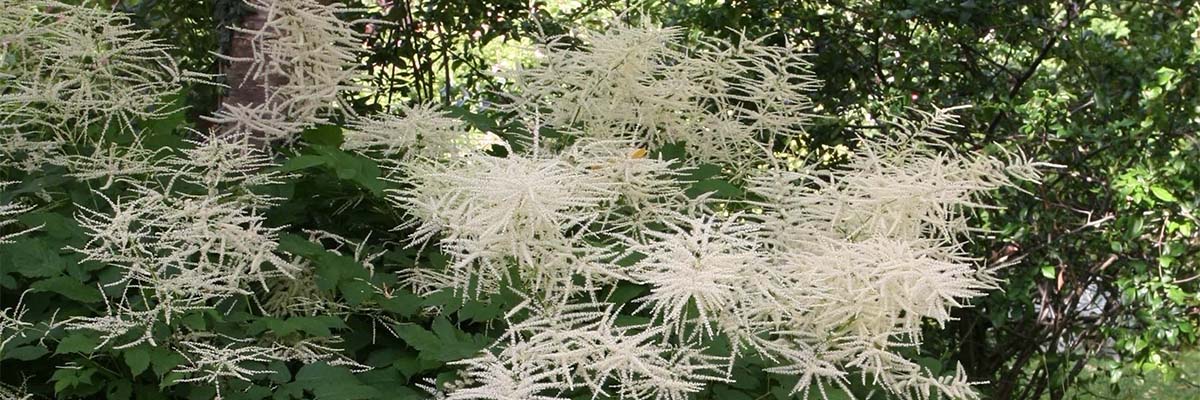
Aruncus, goat's beard: planting, growing and care
Contents
Aruncus in a nutshell
- Aruncus is a tall, imposing perennial plant that adds volume to borders
- Its flowering is delicate and airy, in large white panicles!
- It also has superb deeply divided, lush foliage
- It is an excellent understorey plant that thrives in cool, humus-bearing soil
- Easy to grow, it requires little maintenance once established
A word from our Expert
Aruncus, also called goat’s beard, is an impressive perennial that produces large, airy white panicles and decorative, dark green, deeply divided foliage. Flowering occurs from early to mid-summer. Inflorescences are held above the foliage and are set off by its dark green colour. Most commonly cultivated species is the Aruncus dioicus; a large, imposing plant that can reach up to two metres tall. More compact varieties are also available, such as the Aruncus aethusifolius or Aruncus ‘Horatio’, better suited to small gardens.
Aruncus thrives in cool, fertile, loose soils. Ideal plant for a low-maintenance garden, as it can live for many years with little attention. However, it will appreciate occasional watering during drought in its first years, and it is best to cut back clumps in late autumn. Aruncus is a robust, vigorous plant with a long lifespan. It is also little affected by pests and diseases. It fits very well into naturalistic scenes, in woodland understorey or at pond edges. Cultivation is similar to that of Astilbes, with which it can be combined for a very light planting featuring soft, airy inflorescences.
Botany
Botanical data
- Latin name Aruncus sp.
- Family Rosaceae
- Common name Goat's-beard, Queen-of-the-woods, Aruncus
- Flowering between May and July
- Height between 30 cm and 2 m
- Sun exposure partial shade
- Soil type humus-bearing, light, cool to moist, not calcareous
- Hardiness between -20 and -25 °C
Commonly called “Goat’s-beard”, Aruncus is a large rhizomatous perennial with dissected leaves, abundant, and with airy, feathery flowering in large, very light white panicles. Botanists recognise between one and four species in this genus. Aruncus dioicus is the principal species, the other taxa sometimes treated as synonyms of it.
Aruncus mainly grow in moist woodland understoreys (and at edges) of mountains in temperate regions of the Northern Hemisphere. This explains their preference for cool, humus-bearing soils, shaded positions, and their high hardiness. Aruncus dioicus grows wild in France. It is found mainly in eastern regions (Alps, Vosges, Jura…) and in the Pyrenees. It can be encountered up to 1 800 metres altitude.
Aruncus belong to the large family Rosaceae, like roses, apple trees, strawberries, potentillas… Although appearing quite different at first glance, Aruncus has a family resemblance with Meadowsweet, Filipendula ulmaria (very dissected leaves, white paniculate, feathery inflorescences), which also belongs to Rosaceae. It is amusing that Aruncus itself is called Queen-of-the-woods… each has its own natural habitat! These plants are also close to spireas (they are sometimes called “wild spirea” or “Goat’s-beard spirea”).
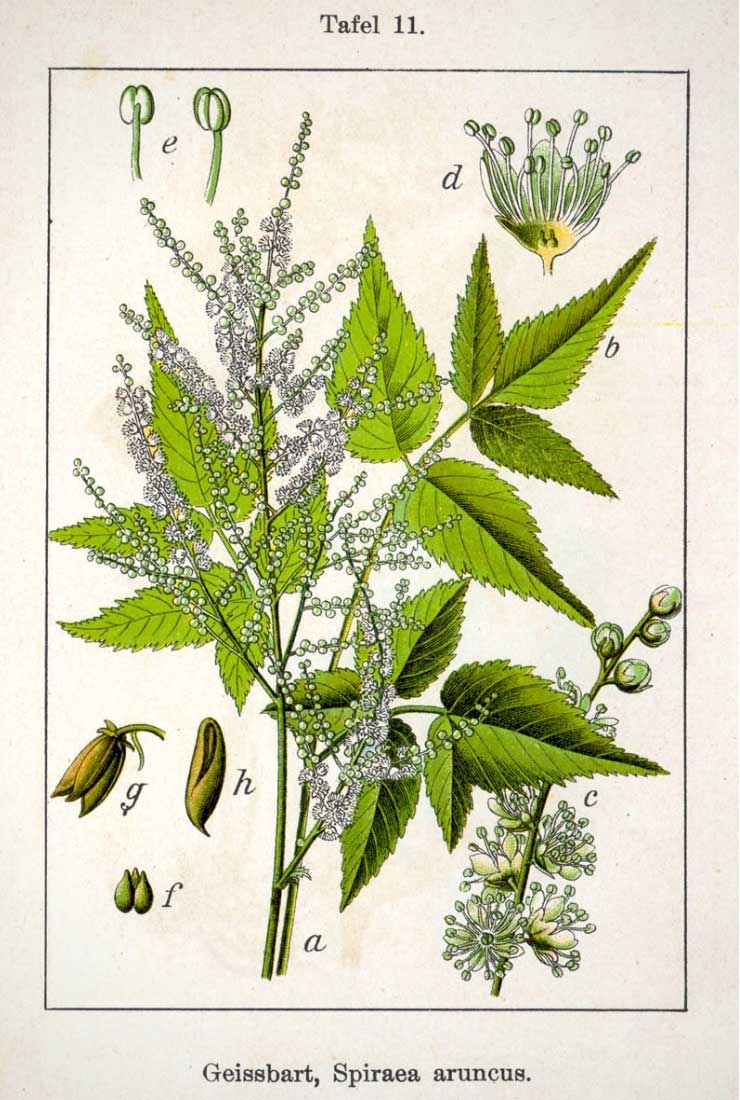
Aruncus dioicus: botanical illustration
In French, Aruncus is commonly called Goat’s-beard, Queen-of-the-woods, sometimes Aruncus, or wild spirea. As its species name indicates, Aruncus dioicus is dioecious, meaning there are male plants and female plants.
Aruncus is a vigorous, robust plant that grows quickly. It forms an imposing, upright clump made of long stems. It is better suited to large gardens, and you should allow plenty of space for it to develop properly. Aruncus (notably Aruncus dioicus) reach up to 2 metres in height at most. There is also a much more compact variety: Aruncus aethusifolius (up to 30 cm tall).
Aruncus are perennials that live for many years. They can easily remain in place for more than 15 years while requiring very little attention.
Aruncus flower in early to mid-summer, between May and July. The flowering is impressive but not very long-lasting.
The individual flowers are small, but very numerous and form large paniculate inflorescences with a soft, feathery aspect. The flowering is elegant, restrained, graceful, somewhat reminiscent of Astilbes or Persicaria polymorpha. The panicles reach between 20 and 50 cm in length and are borne terminally, above the foliage.
The flowers are cream-white, which brings much brightness to shaded corners of the garden and creates a strong contrast with the dark green foliage.
In Aruncus aethusifolius, the flowers are borne on handsome dark red peduncles that combine very well with the white spikes and green foliage.
The flowers are tiny: between 3 and 5 mm in diameter. They consist of five petals and five sepals (as in many Rosaceae) and bear stamens (male flowers) or pistils (female flowers).
As its name indicates (Aruncus dioicus), Goat’s-beard is dioecious: there are male plants (bearing only male flowers) and female plants (bearing only female flowers). Their flowering will not have exactly the same shape. Male inflorescences tend to be erect, short and dense, composed of flowers with numerous stamens, giving them a silky, plume-like appearance. Female inflorescences are long and very fine, somewhat more pendulous, their flowers bearing three pistils. Male panicles can seem more striking, but female panicles are much more delicate and elegant, graceful. However, when purchasing it is difficult to know whether a plant is male or female, since one must wait for flowering; foliage and vegetative parts give no indication of plant sex.
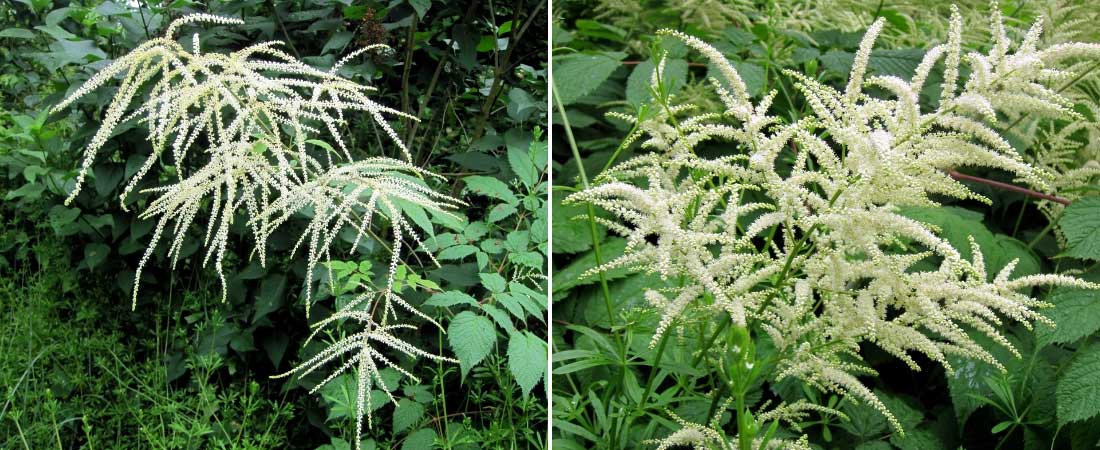
Flowering of a female Aruncus plant and of a male plant
The flowers are melliferous, containing nectar that attracts pollinating insects which transfer pollen from one flower to another.
Aruncus panicles are useful in bouquets. They add volume and set off other flowers such as roses or lilies.
After flowering the inflorescences turn light brown and become far less attractive, so it is advisable to cut them off.
Aruncus also impress with their abundant foliage, which looks lush. The leaves are finely divided, dissected, somewhat reminiscent of fern fronds. They are elegant, graphic, and light. Leaves are very large, measuring between 20 cm and 1 m in length, and are borne on a long petiole. They are inserted alternately, placed one after the other along the stems.

Foliage of Aruncus dioicus (photo Walter Siegmund)
Leaves are divided into numerous dentate leaflets, ovate or lanceolate in shape, with well-marked veins. They have an airy, open look, the leaflets not being closely packed but spaced on fine axes. Each leaf comprises at least 20 leaflets.
Foliage is dark green, which makes the white flowering stand out, and provides an excellent backdrop for other coloured blooms when Aruncus is planted at the back of borders. Foliage takes on attractive bronze–orange tones in autumn before disappearing. Indeed, this plant has deciduous foliage.
Aruncus produce small follicles (dry fruits) that open when ripe to release brown seeds, which are toxic to humans but appreciated by birds. As Aruncus are dioecious, only female plants will set seed. They tend to self-seed freely in the garden.
Main varieties of Aruncus
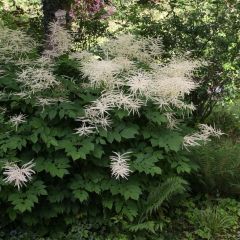
Aruncus dioïcus sylvestris - Goat's Beard
- Flowering time July to September
- Height at maturity 1,60 m
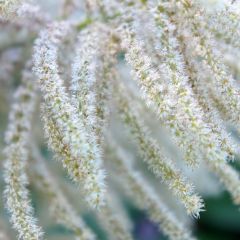
Aruncus sinensis Zweiweltenkind
- Flowering time August, September
- Height at maturity 1,50 m
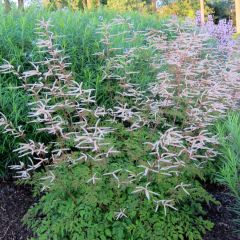
Aruncus Horatio
- Flowering time July, August
- Height at maturity 70 cm
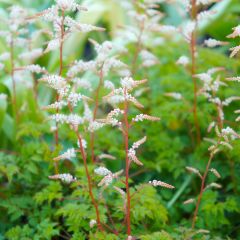
Aruncus aethusifolius - Dwarf Goat's Beard
- Flowering time June, July
- Height at maturity 30 cm
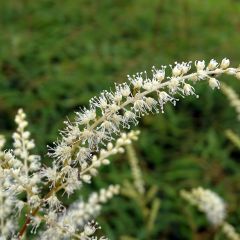
Aruncus dioïcus Kneiffii - Goat's Beard
- Flowering time July, August
- Height at maturity 80 cm
Discover other Aruncus
View all →Available in 3 sizes
Available in 1 sizes
Available in 2 sizes
Available in 2 sizes
Available in 1 sizes
Available in 1 sizes
Available in 1 sizes
Available in 1 sizes
Available in 1 sizes
Planting
Where to plant?
Ideally plant Aruncus in partial shade, although it also tolerates full sun as well as shade. It is a good woodland plant, nicely accompanying ferns and hostas. If planted in sun, water much more frequently. You can adapt its exposure to your geographical situation: plant in shade if living in south of France, and in sun or partial shade in north.
Aruncus appreciates cool, even moist, soils, and will thrive on edge of a pond or near a stream. You can use it to create a very natural-looking scene. A substrate such as “woodland soil”, like that found in forests, is ideal: fertile, humus-bearing, loose and light. Feel free to enrich soil with organic matter. Regarding pH, Aruncus prefers non-calcareous soils, rather neutral or acidic.
Also recommend planting Aruncus sheltered from wind, which may flatten its tall stems and panicles. Otherwise, may need to provide staking.
As Aruncus is generally fairly tall, place it towards back of borders, behind lower plants. Similarly, it is a plant that expands and grows quickly, forming large clumps. Allow enough space around it. Avoid placing in confined spot, crowded among other plants, where it would have no room to develop.
As Aruncus is an imposing, fairly large plant and prefers substrates that remain cool, better to grow in ground rather than in a pot.
More compact Aruncus, such as Aruncus aethusifolius, can be planted on borders or at front of beds. Also, if space is limited in garden, favour smaller varieties rather than Aruncus dioicus.
When to plant?
You can plant Aruncus in spring (around April) or in autumn (September–October). Most important is to avoid periods of extreme heat or frost.
How to plant?
- Start by placing rootball in a basin filled with water
- While it rehydrates, dig planting hole about twice size of rootball. Feel free to add compost.
- Remove Aruncus from pot and place in planting hole.
- Replace soil around and tamp down to ensure good contact between substrate and roots.
- Water generously.
Continue to water regularly after planting. Be vigilant during first year to prevent soil drying out too much. Strongly recommend installing a layer of mulch.
Care
Aruncus is the perfect plant for natural-style gardens, as it requires very little maintenance. It is a perennial that can quite easily be “forgotten”; it will persist even without intervention. Cultivation is in fact quite similar to Astilbes, which also like cool conditions and partial shade, are robust plants and do not demand much care. You can easily plant them together in the garden!
It is preferable that substrate remains cool, especially while plant is still young. You can water occasionally in summer, notably during planting year. Once established, Aruncus tolerates periods of drought.
We recommend applying a thick layer of mulch all around the clump, made of dead leaves or RCW (ramial chipped wood). Besides helping to keep soil cool for longer, this will limit weed growth while enriching soil with organic matter as mulch breaks down. If planted in woodland, leave tree leaves at plant’s feet, or gather them around the clump, but do not remove them.
Aruncus will appreciate applications of well-rotted compost, as it likes fertile, humus-bearing soils. Place compost around the clump and incorporate it superficially into soil by forking.
You can remove the inflorescences once they have faded. Unlike other plants, this does not prolong flowering, but helps keep a bed attractive and tidy. However, you can also leave inflorescences on female plants so they produce seed and self-seed.
We also recommend pruning Aruncus in late autumn, cutting the plant back to ground level. Avoid cutting back too early, though, because foliage takes on lovely colours in autumn; it would be a pity not to enjoy them.
Harvest panicles for use in bouquets.
Aruncus is a robust plant, rarely affected by disease. Regarding pests, it is sometimes attacked by black aphids, which pierce the plant and feed on its sap, weakening it. Treat by spraying diluted black soap in water. Also watch for sawfly larvae. Larvae of these hymenopterans closely resemble small caterpillars but are not. They chew foliage, usually leaving only the veins. Remove affected parts of plant, search for sawfly larvae and, if possible, remove them by hand.

Sawfly larvae eating Aruncus foliage (photo Line Sabroe)
Multiplication: sowing, division
Sowing
As Aruncus are dioecious plants, only female young plants are able to produce seeds. You can sow their seed in late winter–early spring. Sowing is fairly easy to carry out; moreover, Aruncus can also self-seed.
- Prepare a pot by filling it with a light potting compost, then press down and level the surface.
- Scatter the seed over the surface.
- Cover with a very thin layer of compost.
- Water with a fine spray.
- Place the pot under a cold frame.
When seedlings have reached a size that allows handling, you can pot them on into individual pots. Plant out when they are at least 15–20 cm tall, avoiding frosty periods (preferably plant between May and September–October).
Division of clumps
Division is carried out in late winter or autumn, and it is preferable to reserve it for specimens at least five years old. This operation is not necessary to increase vigour of the plant or to regenerate it; Aruncus could very well remain in place for years without being divided. Division is somewhat tricky because the stump is woody and the roots are more or less taprooted.
- Choose a well-developed mature specimen, several years old.
- Dig up the clump, or (if extensive) at least part of it.
- Remove excess soil to make the rootstock clearly visible.
- Cut the rootstock into several sections using a sharp knife.
- Prepare the ground to receive the new young plants resulting from the division. Preferably choose a position in partial shade, on fertile, moist soil.
- Plant.
- Water thoroughly.
Companion planting
Obviously, Aruncus are perfect for incorporating into an understorey garden. With their large white panicles, they have the advantage of bringing light to shady areas of the garden! Plant them with hostas, ferns, brunneras, ligularias, foxgloves, Paris polyphylla, etc. Discover also the delicate, airy flowering of Saxifraga stolonifera ‘Cuscutiformis’! You can plant Aruncus on the woodland edge to accompany the transition from an open area to a wooded space.
Aruncus fit well into natural-style gardens, for example with large grasses. Compose a wild-style garden with plants of free habit, light flowering and large, bold foliage. Make the most of Brunnera, Solomon’s seal, ferns… Not forgetting the delicate flowers of columbines! Also consider Polemonium, which offers lovely soft-blue flowers and superbly divided foliage.
As they prefer soils that stay cool and moist, Aruncus are ideal at the pond edge to create a fresh, lush atmosphere. Pair them with ferns (Matteuccia, Osmundas…), Filipendula ulmaria, Astilbes, Asian primulas… Also discover the superb flowering of Iris sibirica. You can also grow bogbean, Menyanthes trifoliata.
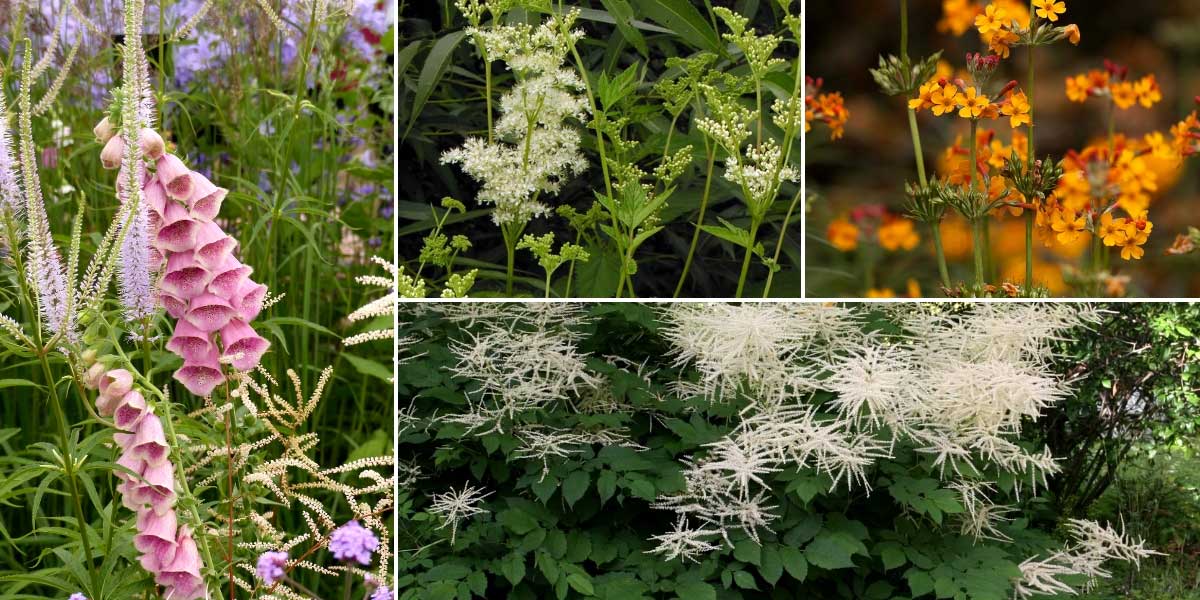
Idea for a planting combination for a very natural setting, for example at the pond edge: Digitalis mertonensis, Aruncus ‘Horatio’ and Veronicastrum virginicum ‘Lavendelturm’ / Filipendula ulmaria (photo Algirdas) / Primula bulleyana / Aruncus dioicus
As Aruncus is an imposing plant, impressive for its foliage and flowering, you can plant it alone as a specimen to really showcase it.
If you want to include it in a border, place Aruncus towards the back. It will set off the large colourful flowers of roses, lilies, gladioli or irises, or the vivid yellow inflorescences of Lysimachia. You can plant lower groundcover plants in front of and around it: alchemilla, hardy geraniums, heucheras, hostas…
Use Aruncus to create an airy border with other light plants that play with the wind and create a sense of movement: grasses, gypsophila, Gaura, flax, Veronicastrum, columbines, Cosmos bipinnatus… Don’t hesitate to pair Aruncus with Astilbes either, as these plants have very similar growing requirements and both offer light, feathery flowering!
You can also use Aruncus to create a sober ‘white’ border, producing a very elegant and timeless garden, with only white flowers and green foliage. Plant alongside gypsophila, Saxifraga stolonifera ‘Cuscutiformis’, pure-white roses, lilies, Aegopodium podagraria, Dicentra spectabilis ‘Alba’…
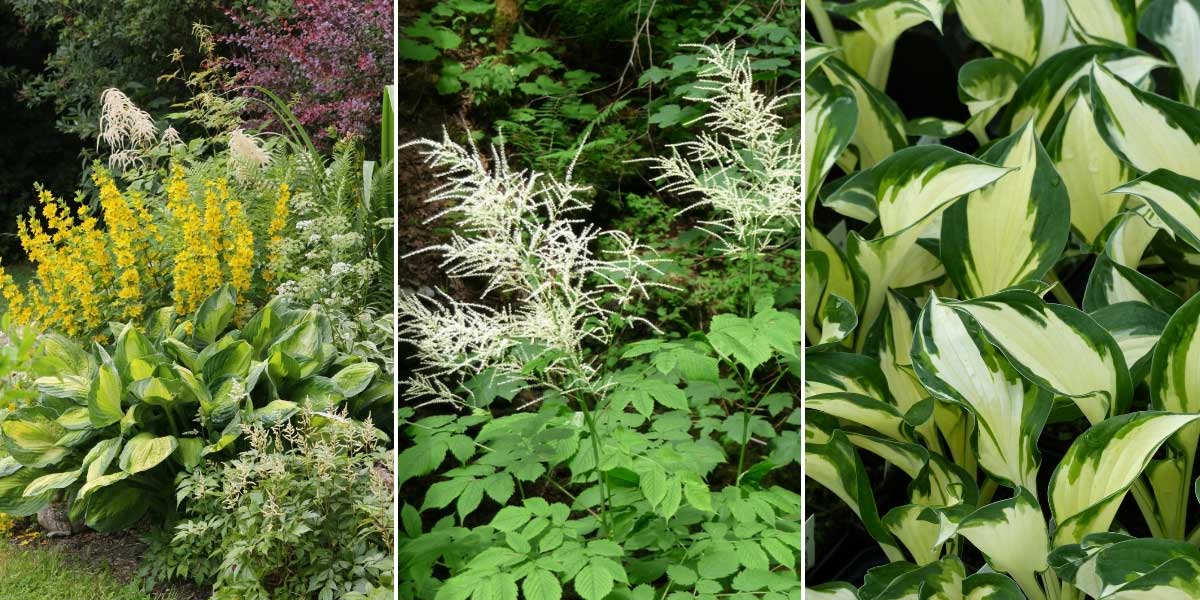
Aruncus fit easily into shady gardens. Scene with Lysimachia punctata, Hosta, Aruncus, Berberis thunbergii (photo Virginie Douce) / Aruncus dioicus / Hosta ‘Fire and Ice’
Useful resources
- Discover our range of Aruncus!
- An article by Michael on our blog – Goat’s beard, a graceful and curious perennial
- Our advice sheet – How to create a beautiful perennial border?
- To pair with Aruncus – Shade plants: 5 new perennials, easy to grow
Frequently asked questions
-
Foliage of my Aruncus looks eaten, lamina is deeply notched. What should I do?
They are probably sawfly larvae chewing leaves of your Aruncus. They consume the lamina, leaving only veins. Look for these larvae, which resemble small caterpillars. Remove damaged leaves and, if not too numerous, remove larvae by hand. You can also use pyrethrum.
-
How can I tell if my Aruncus is male or female?
To determine a plant's sex, wait until it is in flower. They cannot be distinguished otherwise; foliage gives no indication. Once in flower, female inflorescences are much finer and thinner and tend to be trailing, whereas male inflorescences are thicker, more compact and feathery, and slightly more upright (see photos in Botany section). To be certain, you can also wait by leaving spent flowers on the young plant: if it produces seeds, it is definitely a female young plant!
- Subscribe!
- Contents
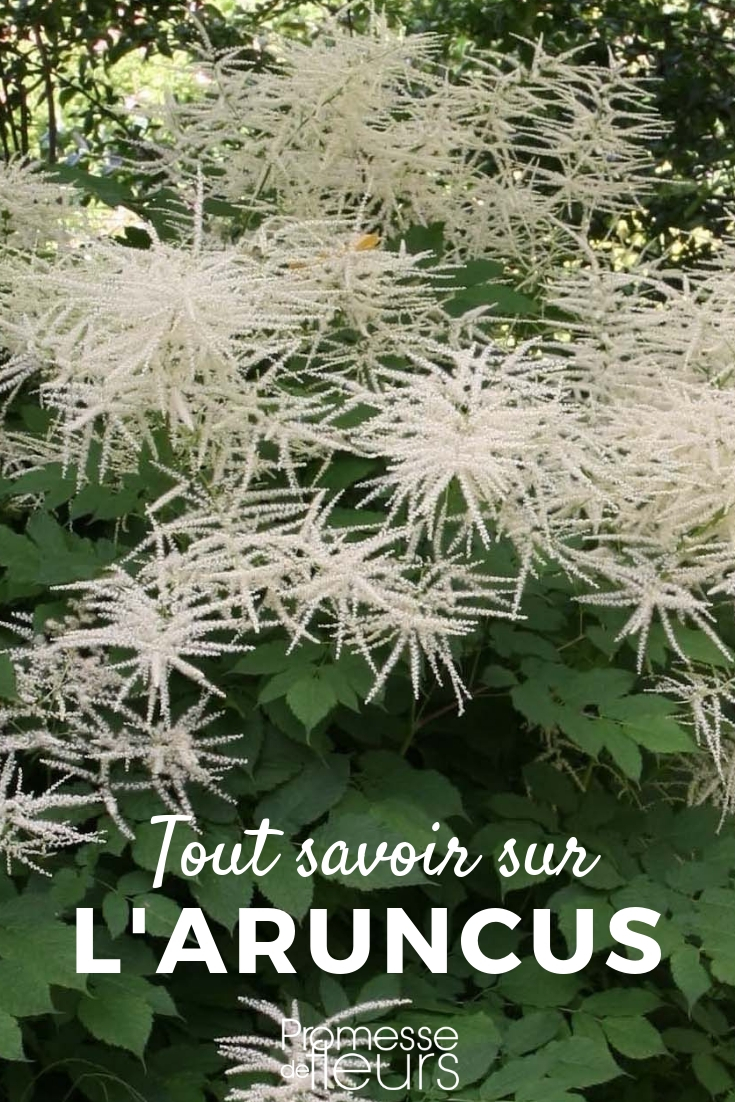































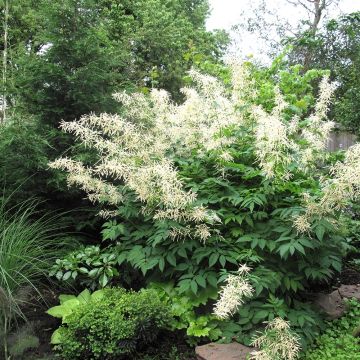


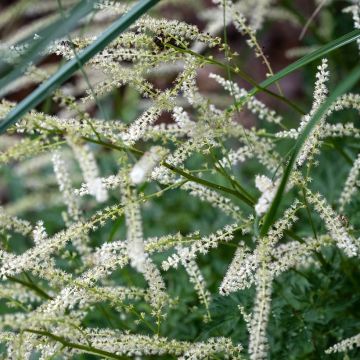
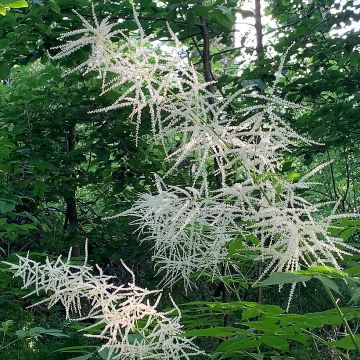

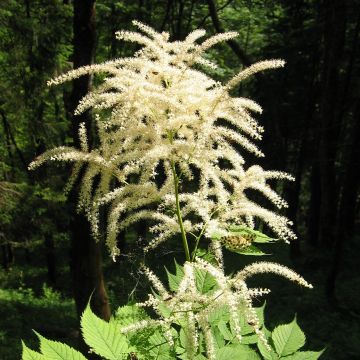


Comments